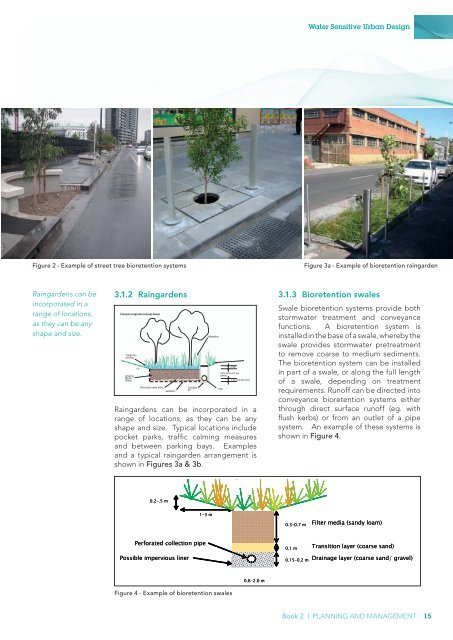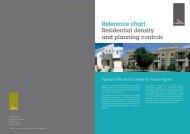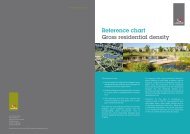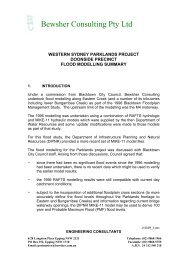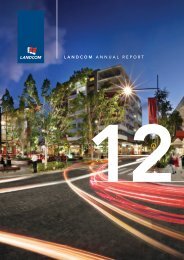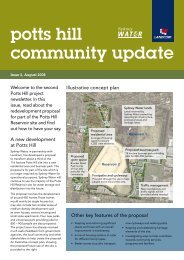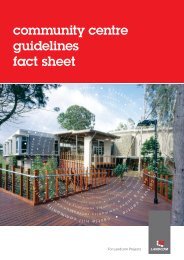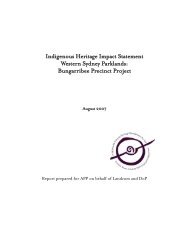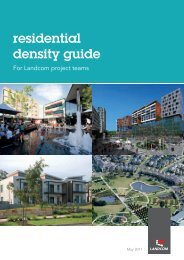Water Sensitive Urban Design
Book 2 | Planning and Management - WSUD
Book 2 | Planning and Management - WSUD
- No tags were found...
Create successful ePaper yourself
Turn your PDF publications into a flip-book with our unique Google optimized e-Paper software.
<strong>Water</strong> <strong>Sensitive</strong> <strong>Urban</strong> <strong>Design</strong><br />
Figure 2 - Example of street tree bioretention systems<br />
Figure 3a - Example of bioretention raingarden<br />
Raingardens can be<br />
incorporated in a<br />
range of locations,<br />
as they can be any<br />
shape and size.<br />
3.1.2 Raingardens<br />
Example raingarden concept design<br />
Temporary<br />
ponding<br />
Growing<br />
Media<br />
(filter)<br />
1:6<br />
Perforated under drain<br />
Geofabric<br />
Overflow<br />
Pit<br />
Vegetation<br />
Raingardens can be incorporated in a<br />
range of locations, as they can be any<br />
shape and size. Typical locations include<br />
pocket parks, traffic calming measures<br />
and between parking bays. Examples<br />
and a typical raingarden arrangement is<br />
shown in Figures 3a & 3b.<br />
g<br />
Pipe<br />
0.15m<br />
0.8m minimum if tree<br />
planted<br />
0.2m (drainage layer)<br />
3.1.3 Bioretention swales<br />
Swale bioretention systems provide both<br />
stormwater treatment and conveyance<br />
functions. A bioretention system is<br />
installed in the base of a swale, whereby the<br />
swale provides stormwater pretreatment<br />
to remove coarse to medium sediments.<br />
The bioretention system can be installed<br />
in part of a swale, or along the full length<br />
of a swale, depending on treatment<br />
requirements. Runoff can be directed into<br />
conveyance bioretention systems either<br />
through direct surface runoff (eg. with<br />
flush kerbs) or from an outlet of a pipe<br />
system. An example of these systems is<br />
shown in Figure 4.<br />
0.2-.5 m<br />
1-3 m<br />
0.3-0.7 m<br />
Filter media (sandy loam)<br />
Perforated collection pipe<br />
Possible impervious liner<br />
0.1 m<br />
0.15-0.2 m<br />
Transition layer (coarse sand)<br />
Drainage layer (coarse sand/ gravel)<br />
0.6-2.0 m<br />
Figure 4 - Example of bioretention swales<br />
Book 2 | planning and management 15


